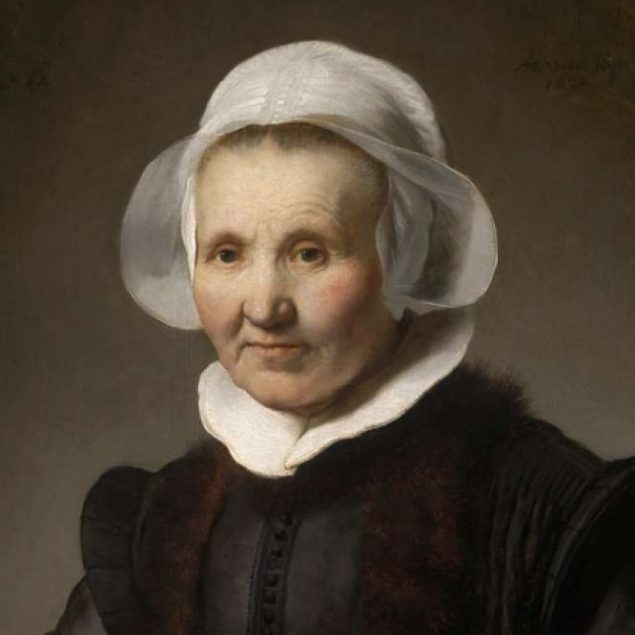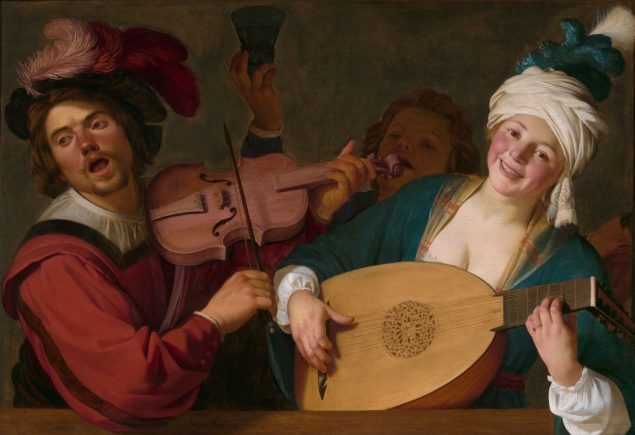Masterpieces of Dutch and Flemish Painting celebrates the commitment of collectors Rose-Marie and Eijk van Otterloo and Susan and Matthew Weatherbie to give their exceptional collections of 17th-century Dutch and Flemish art to the Museum—a donation that will constitute the largest gift of European paintings in MFA history.
This new installation integrating paintings from the Van Otterloo and Weatherbie collections is currently on view in the Museum’s galleries dedicated to Dutch and Flemish art. The Leo and Phyllis Beranek Gallery, 243, features major highlights: Rembrandt’s Portrait of Aeltje Uylenburgh (1632), Cuyp’s Orpheus Charming the Animals (about 1640) and Honthorst’s A Merry Group behind a Balustrade with a Violin and a Lute Player (about 1623). The gallery demonstrates how the Van Otterloo and Weatherbie collections complement both each other and the MFA’s holdings. Still Life with Oysters, Sweetmeats and Dried Fruit in a Stone Niche (1609) and Still Life with Various Vessels on a Table (about 1610) exemplify the carefully arranged and structured early still lifes by Osias Beert, offering a glimpse of luxury items like oysters, figs, raisins and Venetian-style silverware. Three works by Saenredam—The Interior of the St. Bavo Church, Haarlem (1660), The North Transept and Choir Chapel of Sint Janskerk, Utrecht (1655) and the MFA’s Church of Saint Odulphus, Assendelft (1655)—illustrate the artist’s ability to paint “portraits” of church interiors, executed with a cool, restrained palette and often including small figures to give scale to the buildings. Peter Paul Rubens is represented by Coronation of the Virgin (about 1623), paired with the MFA’s oil sketch The Sacrifice of the Old Covenant (about 1626).
The Robert and Ruth Remis Gallery, 244, features four monographic displays focusing on Jacob Isaacksz. van Ruisdael, one of the greatest Dutch landscape artists; Willem van de Velde the Younger, who dedicated his career to painting seascapes; Jan Steen, whose genre paintings—at times humorous, at times, serious—reveal human foibles and joy; and Pieter Claesz., who specialized in the monochromatic still lives often called “breakfast” pieces. The gallery includes thematic displays of the water and the land, with works by Jan van Goyen, Jan van de Cappelle and Philips Koninck; and flower still lifes by Jan van Huysum, Jan Davidsz. de Heem, Hendrick de Fromantiou, Jacob van Walscapelle and Rachel Ruysch.
The Art of the Netherlands in the 17th Century Gallery, 242, features landscapes and architectural paintings, genre scenes, portraits, still lifes, and history paintings and currently displays six works from the Van Otterloo gift, complementing the MFA’s holdings, including Gerrit Dou’s Dog at Rest (1650), a perfect example of the fine brushwork and endearing subject matter that made the artist one of the most successful painters of the day.

Rembrandt van Rijn (1606-1669), Portrait of Aeltje Uylenburgh (detail), 1632
Rose-Marie and Eijk van Otterloo Collection

Gerrit van Honthorst (1592-1656), A Merry Group behind a Balustrade with a Violin and a Lute Player, ca. 1623
Rose-Marie and Eijk van Otterloo Collection

Willem Claesz. Heda (1594-1680), Still Life with Glasses and Tobacco, 1633
Rose-Marie and Eijk van Otterloo Collection.
